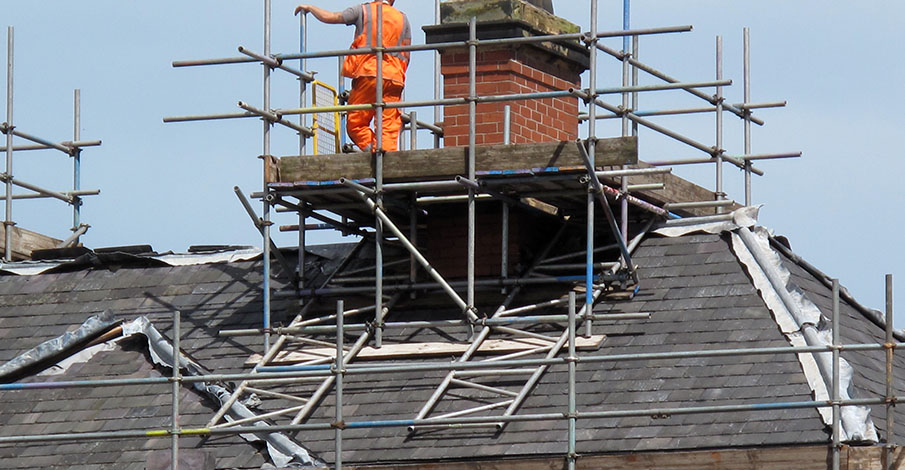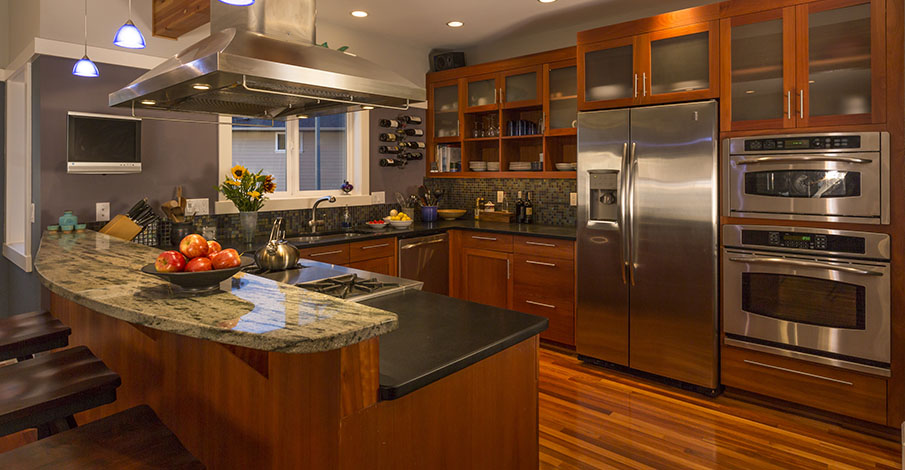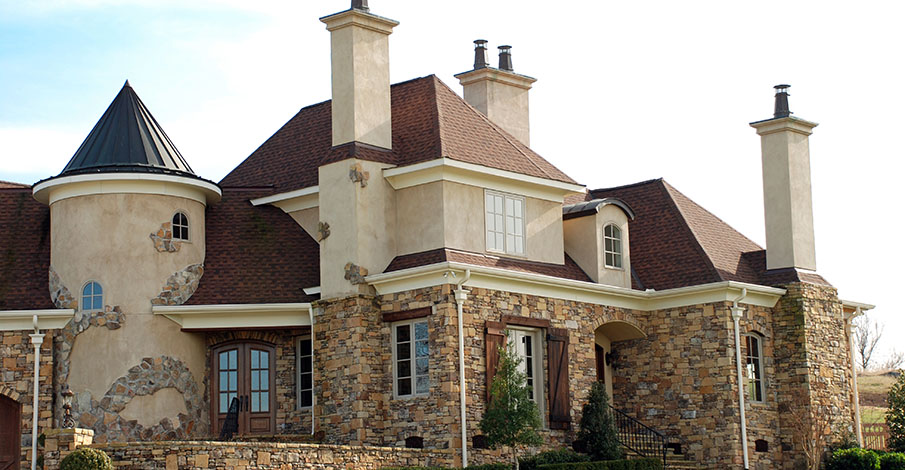Chimneys are ignored structures of a house because homeowners usually turn on the fireplace or furnace and don’t think about the chimney in this process. However, you must carry out a chimney inspection once a year because problems like a cracked flue liner are a fire hazard. Read on to know why cracks in your chimney flue liner are dangerous and how they form.
Dangers Of A Cracked Chimney Flue Liner
Toxic Fumes Enter Your House
The process of burning wood, oil, or gas creates smoke and toxic fumes. Chimneys are made to create a vessel for these toxic fumes to flow out of your house. But when the flue liner sustains cracks, these toxic fumes also find their way into your house.
Keep in mind that these fumes include carbon monoxide which can cause severe health problems and even death if someone is exposed to it a lot. Also, this gas is odorless and colorless. That’s why it’s also called the silent killer.
So, chimney inspections are important because you can detect cracks in the flue liner sooner than before and have the flue replaced. Moreover, for safety, you should install a carbon monoxide detector in your house so it goes off in case of a CO leak.
House Fire
A chimney liner doesn’t only protect your home from toxic fumes, but from unexpected fires as well. If there are cracks in the flue liner tiles, soot and creosote will also build up on the parts of the house that are exposed due to the cracks. Soot and creosote are flammable materials and if a fire erupts in the chimney, it will not be limited to the flue liner because the creosote in the cracks will catch fire also and the chimney fire will turn into a house fire.
Moreover, a chimney liner keeps heat from reaching combustible parts of your house like wood. With cracks, heat will be transferred to wood, which can cause a fire.
Inefficient Heating
Your gas or wood fireplace becomes less efficient as the cracks and openings in the chimney flue liner increase. Chimneys ensure enough oxygen inflow and the expulsion of combustion by-productions for efficient fireplace operations. As cracks occur in the flue liner, the air pressure is impacted and so is the fireplace efficiency.
In addition to that, in clay tile flue liners, some parts of the liner fall inside the chimney, called spalling. This can also partially block the chimney. It intensifies the drafting problem. Apart from inefficient heating, there is a higher risk of toxic fumes leaking inside your room or house.
Inefficient heating is a big issue, but considering other dangers of flue liner cracks like carbon monoxide leakage into your house and a house fire, this should be the least of your worries if your chimney flue tiles are cracked.
Chimney Damage
A flue liner takes all the impact of the by-products of burning wood like high heat and corrosion. However, when the flue liner is cracked, some parts of the chimney masonry are exposed to high heat, and this time, the chimney masonry begins sustaining wear and tear and corrosion.
This leads to chimney damage like spaces between bricks, spalling bricks, a leaning chimney, and other issues. In this case, you will not only need to replace the chimney flue liner but also need to repair the chimney as well. There have been instances where homeowners had to rebuild their chimneys because they ignored flue liner cracks.
Causes Of Flue Liner Cracks
The Material
Three types of chimney liner materials are used: clay tiles, cast-in-place, and stainless steel. Clay tiles and cast-in-place liners are the least durable compared to stainless steel liners. That’s because they have a higher likelihood of developing cracks sooner than in stainless steel.
So, if your chimney has a clay tile or cast-in-place chimney liner, your chimney is vulnerable to cracks and the dangers associated with this problem. Ensure chimney inspections and if the liner has cracks, have it relined with a stainless steel liner because its installation cost and installation process are easier than those of clay tile and cast-in-place liners.
Wrong Flue Liner Size
A wrong-sized flue liner increases the rate of its damage as it increases creosote buildup on the liner and also increases carbon monoxide production. This happens due to improper drafting that affects the combustion process, which then leads to creosote buildup and CO production.
Keep in mind that the liner’s size should be optimum concerning the exhaust size of the fireplace or furnace. Taking this simple measurement can be done incorrectly by homeowners. So, make sure to hire a chimney contractor Ellicott City who can take measurements and suggest and install the correctly sized flue liner for your chimney and fireplace.
Inferior Chimney Construction
An improperly constructed chimney and liner will show problems much sooner than you would expect. It could be anything related to low-quality materials, the wrong composition of the mortar, bad craftsmanship, or anything else.
Moreover, ignoring the thermal expansion aspect during construction also leads to problems. The builder should make sure that the chimney can accommodate the contraction and expansion caused by temperature changes, otherwise, damage will be imminent.
So, if there are chimney construction errors, it will become a bothersome problem for you. Often, you can get away with the relining of the chimney with a metal liner, but if the overall structure of the chimney is improperly built, you may need to get the entire chimney rebuilt.
Trauma
Even a well-made chimney is prone to damage caused by earthquakes or a lightning strike. You can’t do much to avoid natural disasters so make sure to have your chimney inspected after an event like that.
Water Damage
Water damage can be due to many reasons like no chimney cap, damaged crown, crumbling mortar, and others. If water or moisture is leaking into the chimney masonry and the liner, it will cause both to deteriorate.
Only relining the chimney won’t fix this problem because the moisture will corrode the new liner as well. An expert should spot the cause of water leakage or moisture buildup inside the chimney and fix that before repairing the chimney and relining it.
Settlement
The footing of a chimney must be solid. If it’s not or the chimney begins settling, the damage to the structure will also begin. The chimney will lean. This will cause severe damage to the masonry and the liner of the chimney. You will have to consider rebuilding your chimney in this case.
Blockage In The Chimney
If anything is causing blockage or obstruction in the chimney, the temperature inside will rise much higher than normal. This will also cause cracks in the flue liner. Spalling bricks, bird nests, and extreme buildup of creosote can block a chimney leading to problems.
Conclusion
A cracked flue liner can cause a house fire and also leak carbon monoxide into your house. So, you must have your chimney inspected to detect flue liner cracks. You will need chimney relining services Columbia MD for the proper relining of your chimney. They will ensure that the correct flue material and size is used so the liner lasts for a long time.



